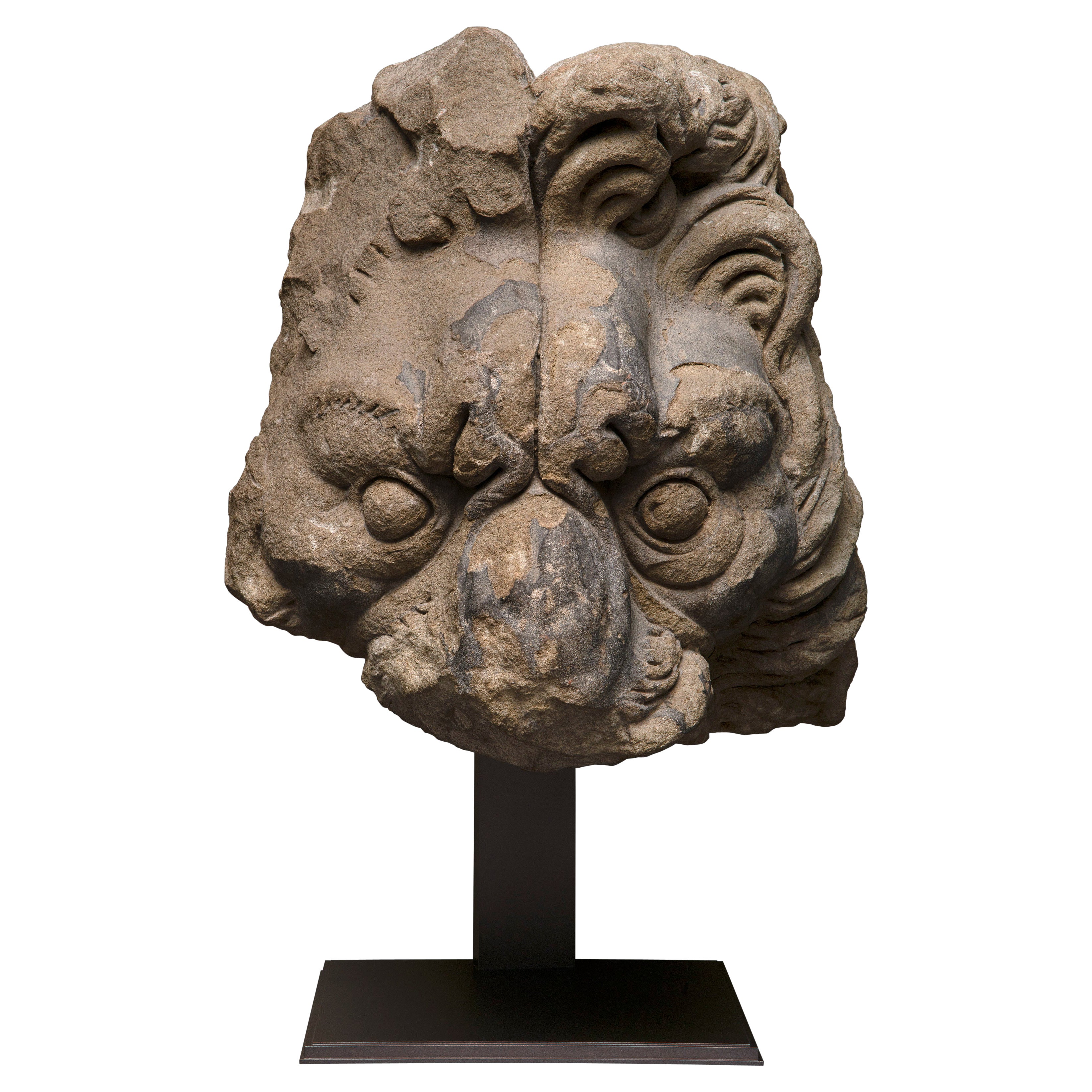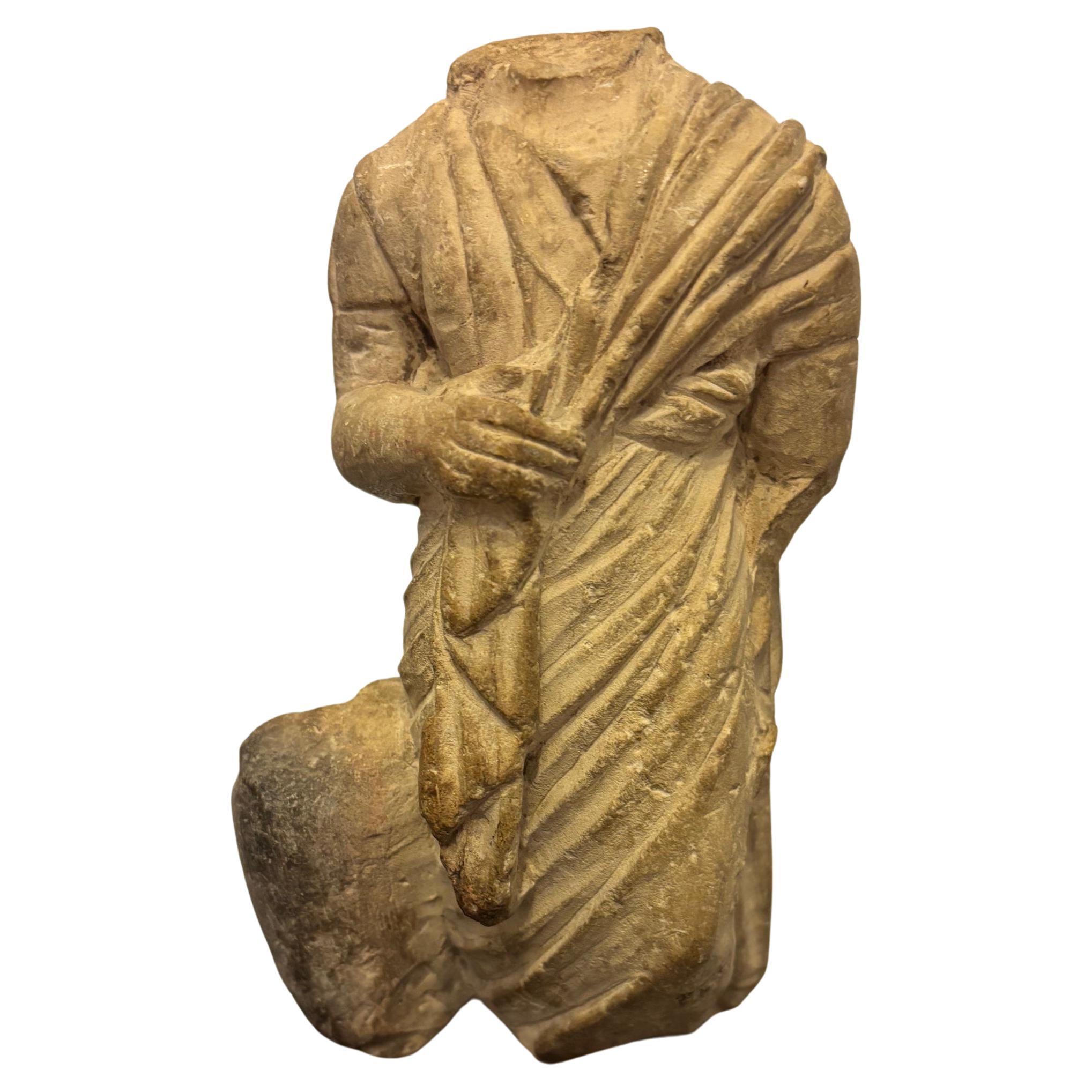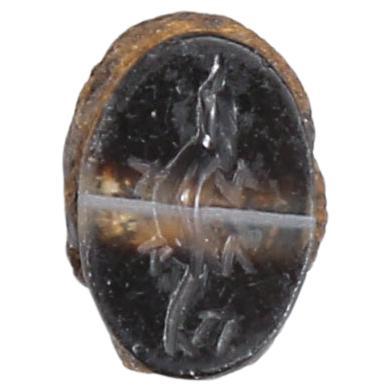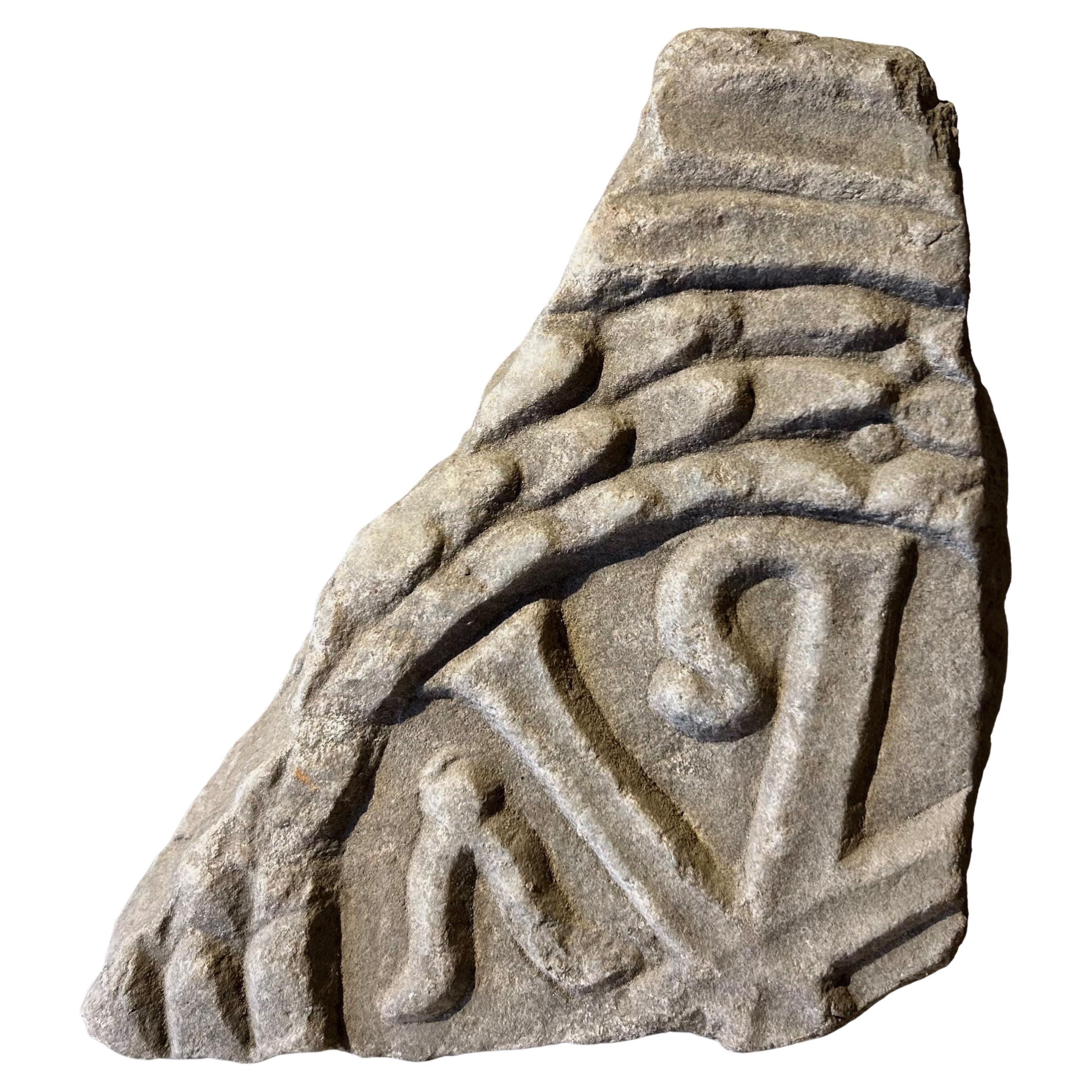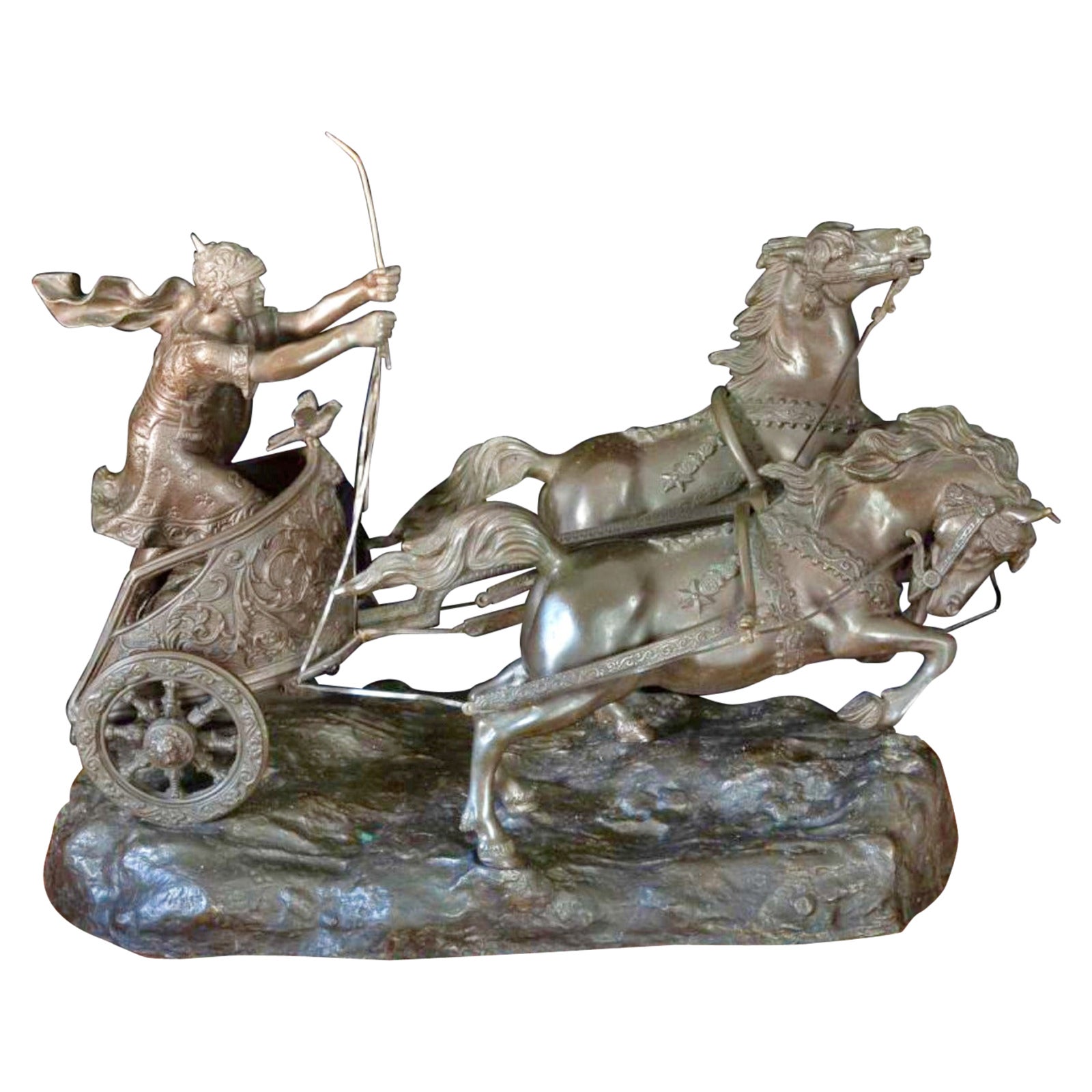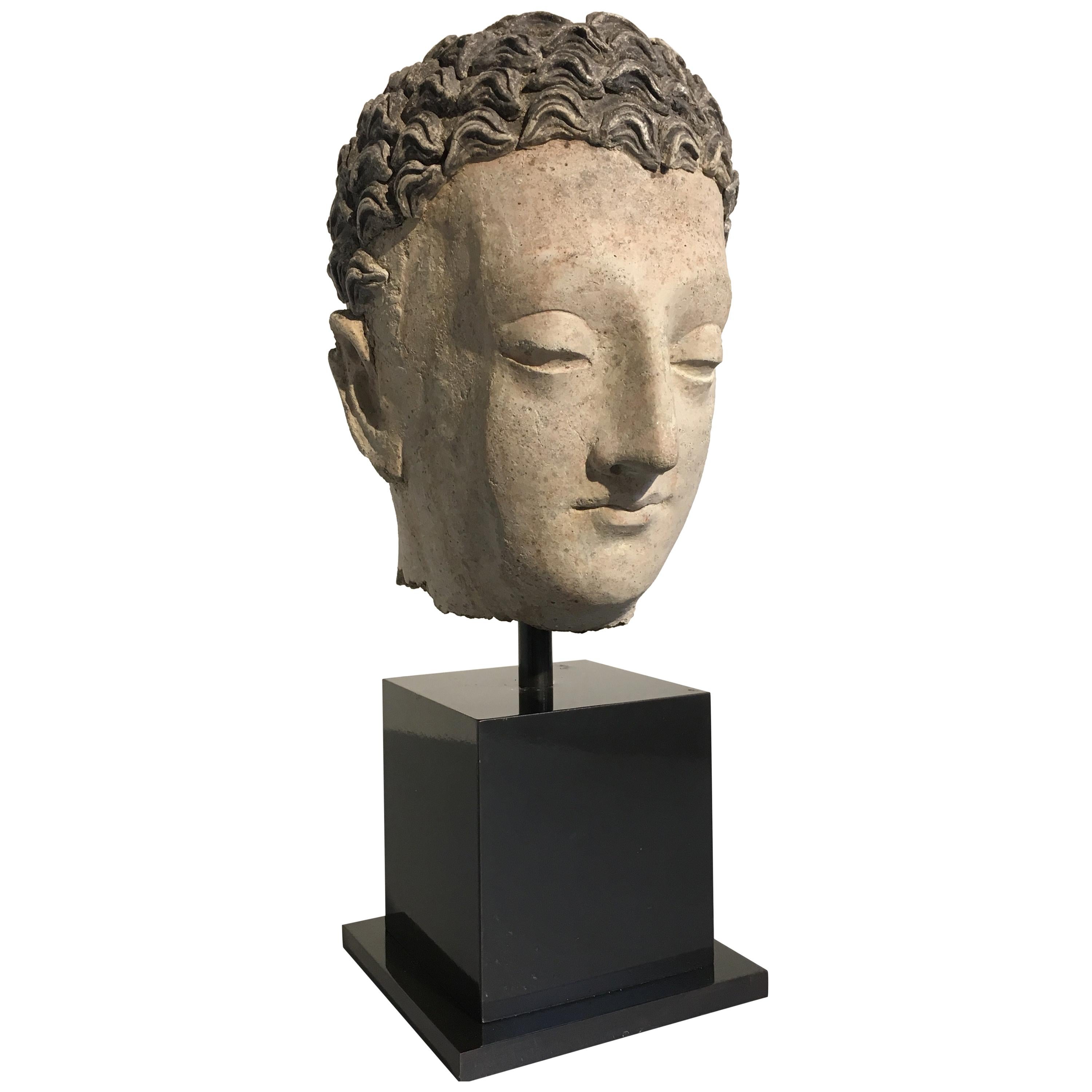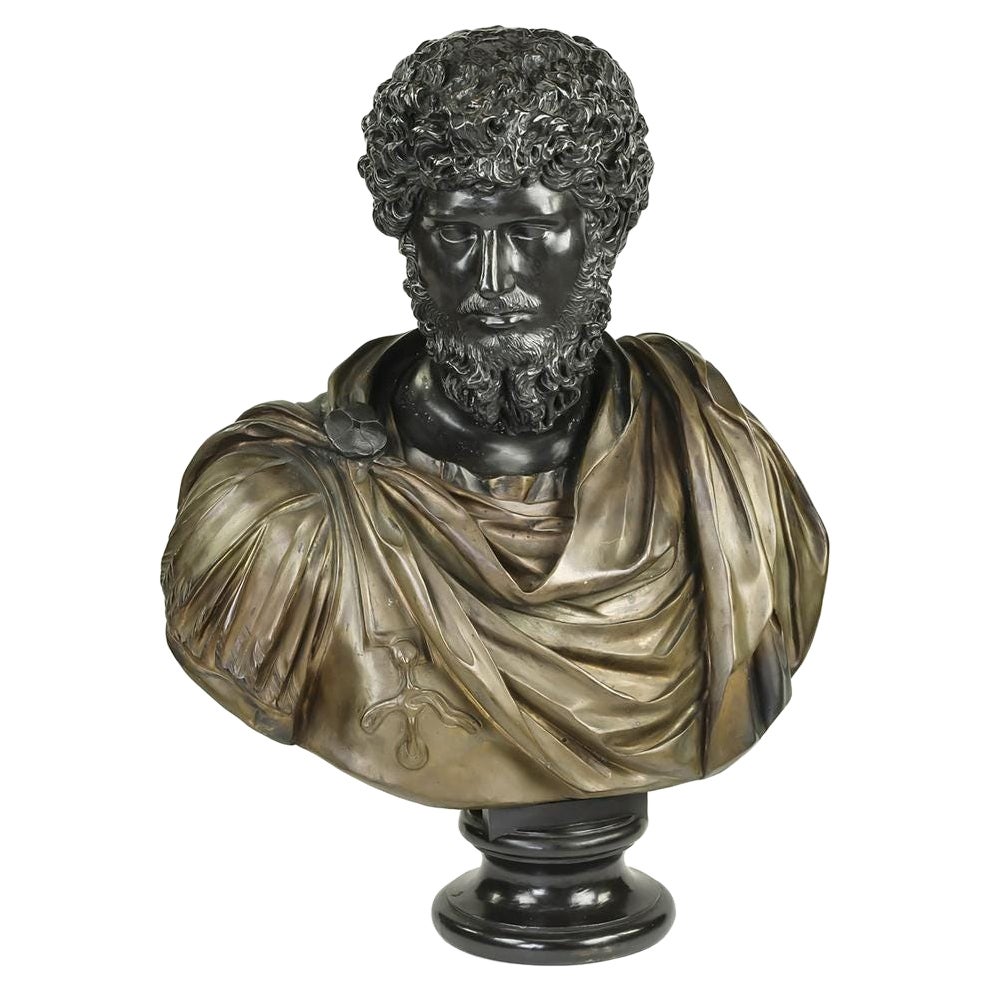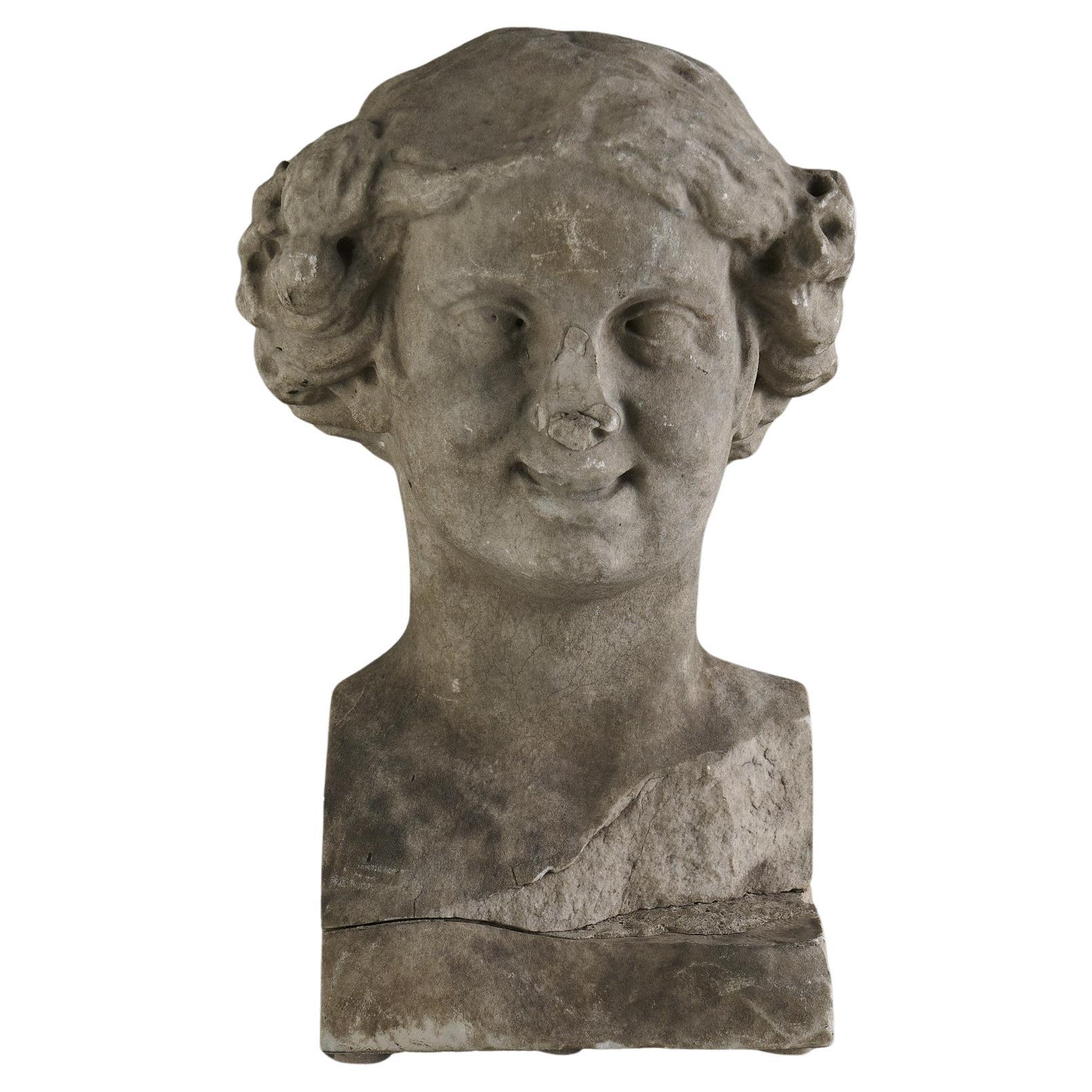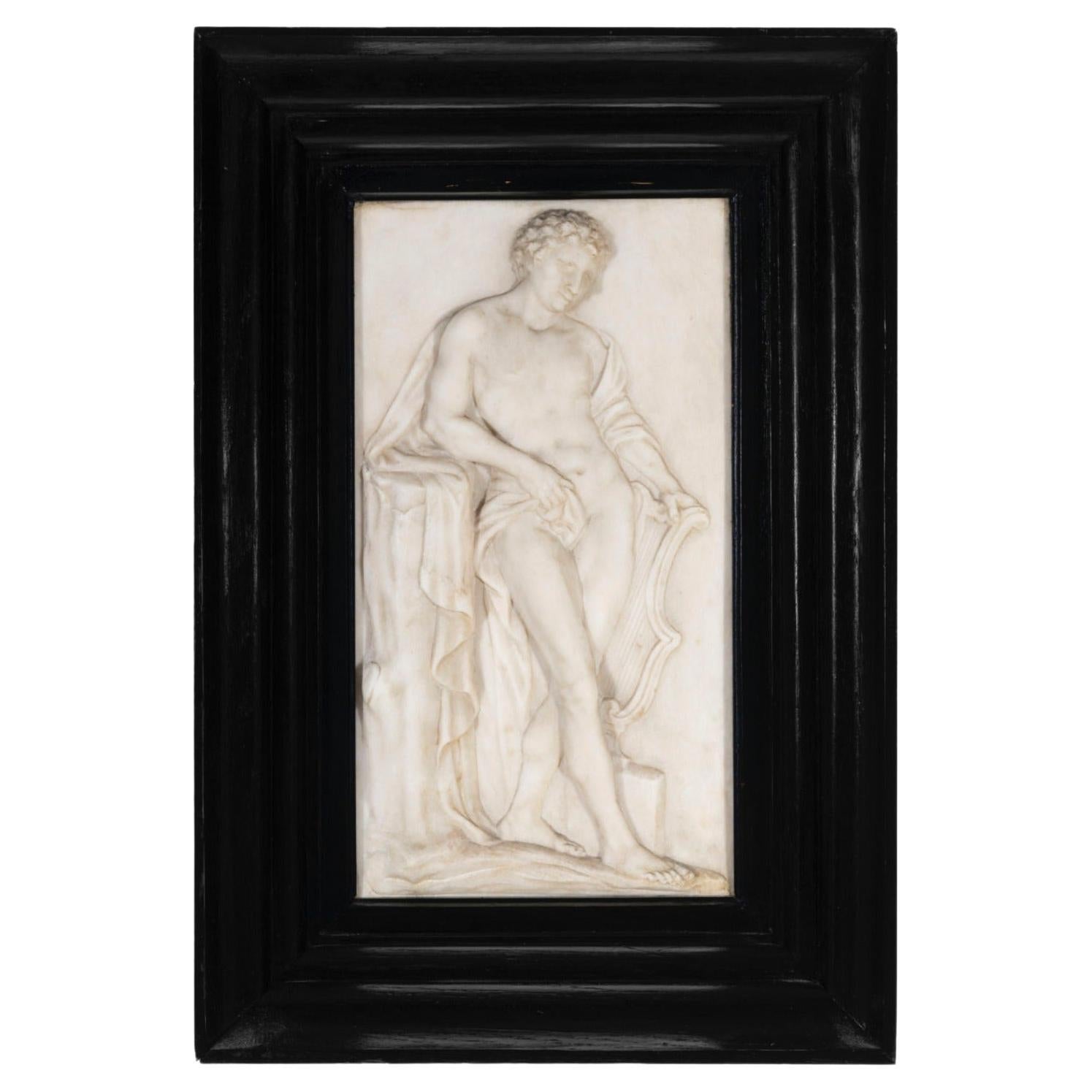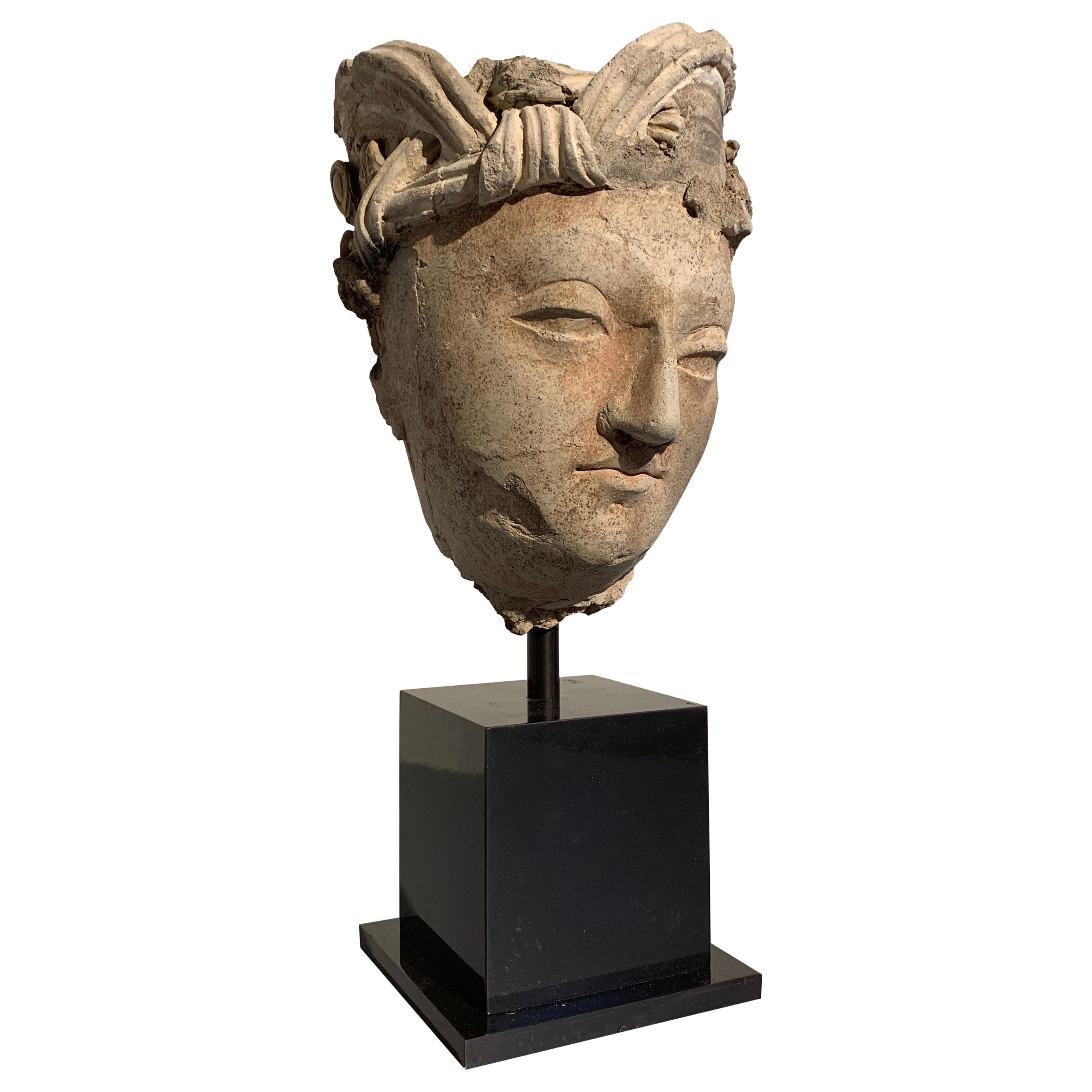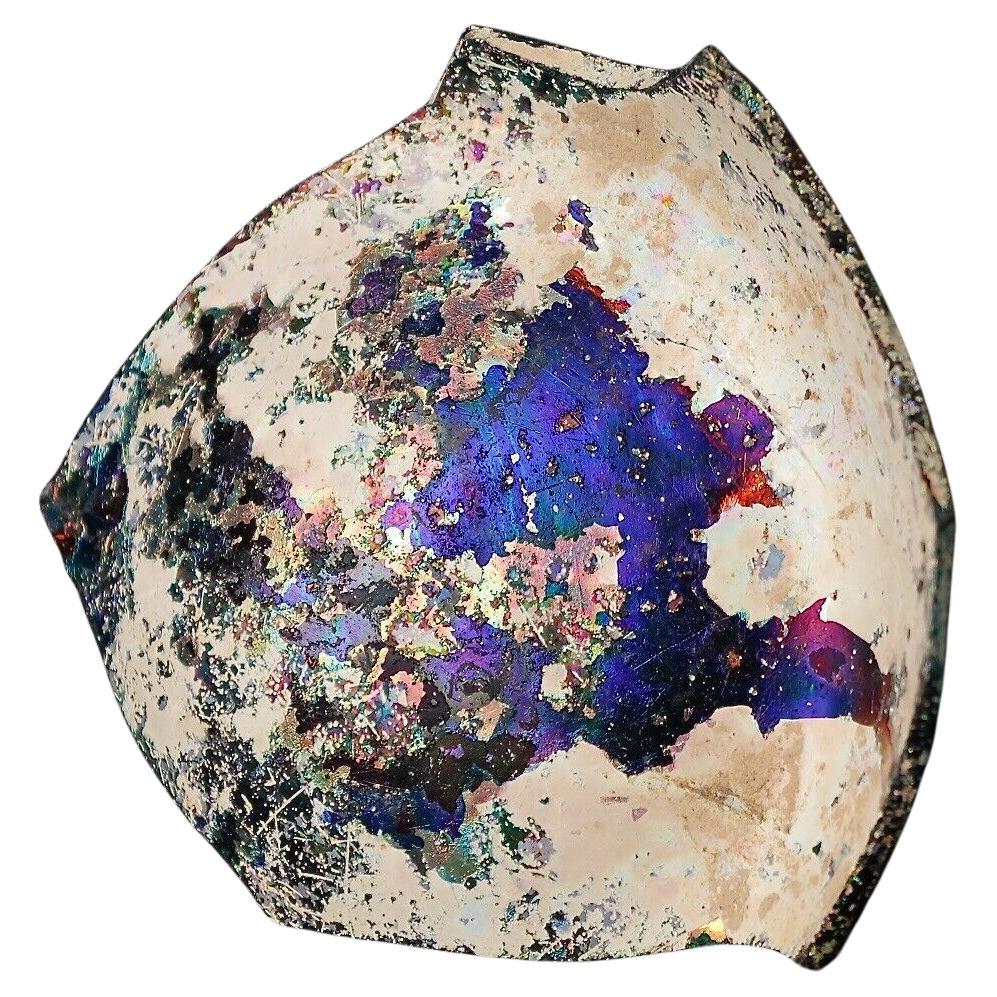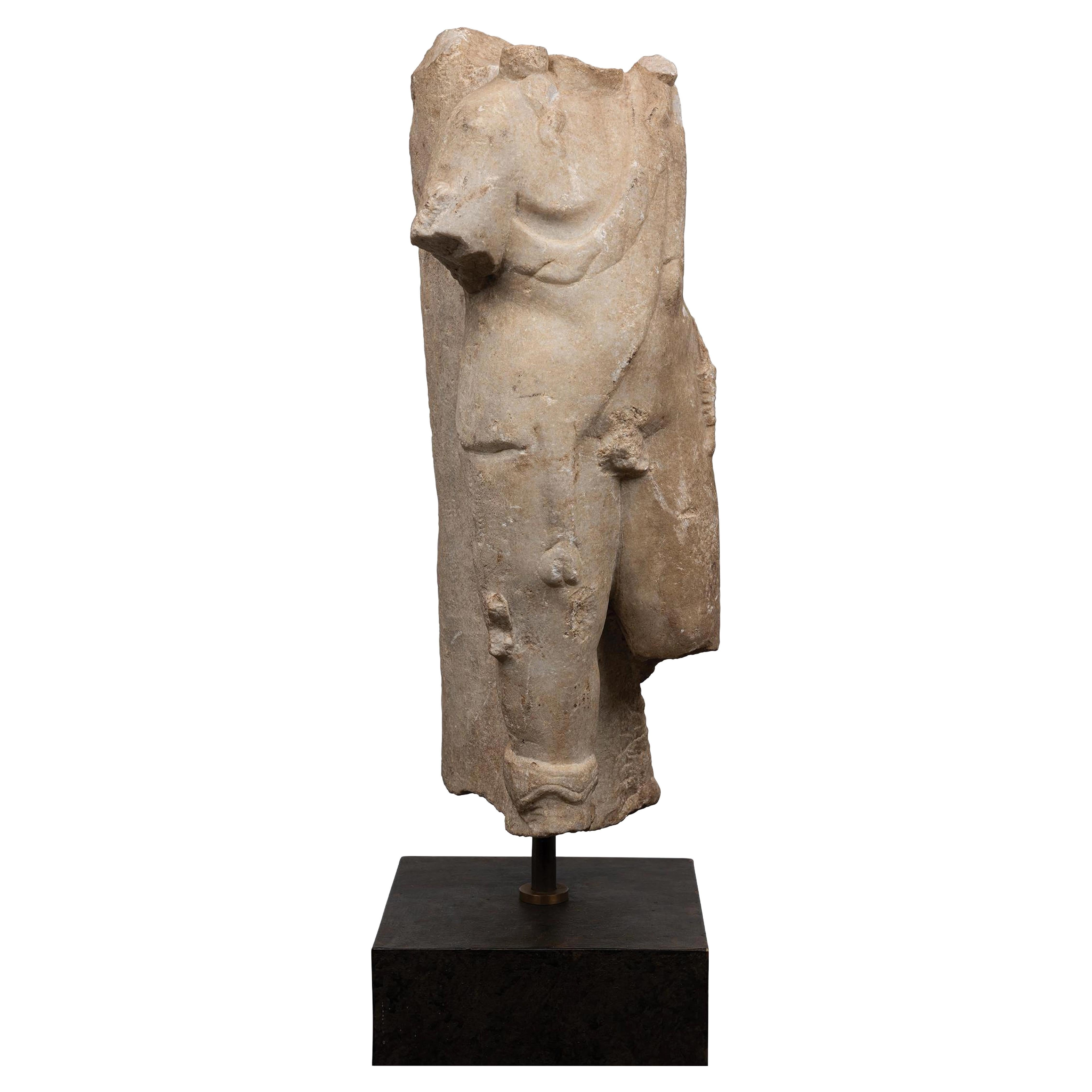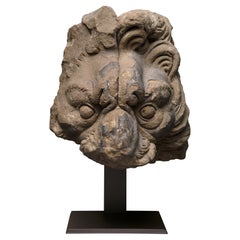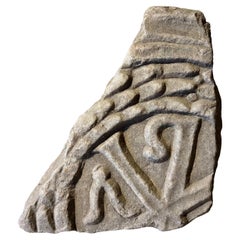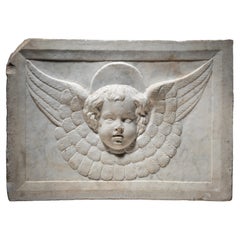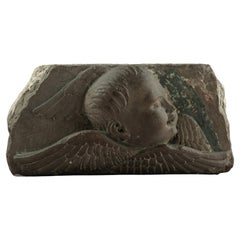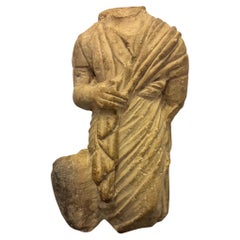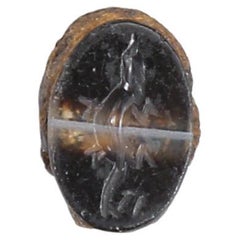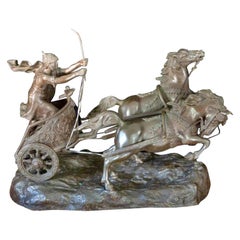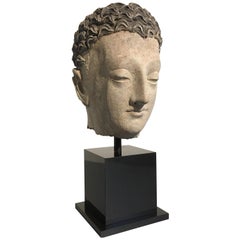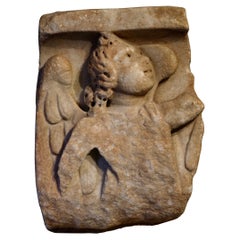
Roman Relief Depicting Eros, 3rd Century AD
View Similar Items
Want more images or videos?
Request additional images or videos from the seller
1 of 6
Roman Relief Depicting Eros, 3rd Century AD
$4,551.41List Price
About the Item
- Dimensions:Height: 11.82 in (30 cm)Width: 8.08 in (20.5 cm)Depth: 2.37 in (6 cm)
- Style:Classical Roman (Of the Period)
- Materials and Techniques:
- Place of Origin:
- Period:
- Date of Manufacture:3rd Century AD
- Condition:Wear consistent with age and use.
- Seller Location:Bruxelles, BE
- Reference Number:1stDibs: LU6666233767872
About the Seller
5.0
Vetted Professional Seller
Every seller passes strict standards for authenticity and reliability
1stDibs seller since 2022
15 sales on 1stDibs
Typical response time: 2 hours
Authenticity Guarantee
In the unlikely event there’s an issue with an item’s authenticity, contact us within 1 year for a full refund. DetailsMoney-Back Guarantee
If your item is not as described, is damaged in transit, or does not arrive, contact us within 7 days for a full refund. Details24-Hour Cancellation
You have a 24-hour grace period in which to reconsider your purchase, with no questions asked.Vetted Professional Sellers
Our world-class sellers must adhere to strict standards for service and quality, maintaining the integrity of our listings.Price-Match Guarantee
If you find that a seller listed the same item for a lower price elsewhere, we’ll match it.Trusted Global Delivery
Our best-in-class carrier network provides specialized shipping options worldwide, including custom delivery.More From This Seller
View AllRoman Lion's Protome - Gallo-Roman, 2nd century AD/3rd century
Located in Bruxelles, BE
Roman Lion's Protome
Sandstone
Gallo-Roman, 2nd century AD - 3rd century
Provenance : Private Collection Prof. Giesen (Konstanz on Bodensee), pré 1945
Most likely from the Chateau a...
Category
Antique 15th Century and Earlier German Classical Roman Animal Sculptures
Materials
Sandstone
Marble Roman relief representing a Christogram
Located in Bruxelles, BE
Marble Roman relief representing a Christogram
Roman relief - 4th century
25 x 22 x 8 cm
Provenance :
Collection of the Château de B. À Nevers by Georges C.S., scholar born in 1833 and deceased in 1909
The entire castle and its collections were acquired in 1938 by the current owners of the estate
A christogram is a monogram or combination of letters that forms an abreviation for the name of Jesus Christ.
This rare fragment combines chi (X) and rho (P), the first two letters of Christ's name in Greek and it is one of the oldest and most popular early christian symbol. The monogram of Christ, or chrismon, is also a powerful symbol of imperial victory: it appeared to Emperor Constantine the Great before his battle against Maxentius in ad 312, promising victory in the name of Christ. In Plato's Timaeus, it is explained that the two bands which form the "world soul" (anima mundi...
Category
Antique 15th Century and Earlier Italian Classical Roman Figurative Scul...
Materials
Marble
$3,516 Sale Price
30% Off
Cercle of Jacopo della Pila - Marble relief depicting a winged Cherub
Located in Bruxelles, BE
Cercle of Jacopo della Pila (Lombard, in Naples 1471-1502)
Marble relief depicting a winged Cherub
Naples, second half of15th century
40 x 57 x 12 cm
Exquisitely carved, this relief portrays a winged cherub with cascading hair and delicate features. The cherub's plump, smooth countenance, rounded cheeks, outlined lips, and finely drawn nose emanate a sense of tenderness. The quadrangular module, is adorned with a carved frame. The relief ascends gradually, transitioning from the low relief of the wings to the high relief of the head.
The rectangular frame and the subtly curved form of the artwork suggest that the relief likely adorned the upper part of an arch or a vaulted chapel. The type is that of the perspective room with a coffered ceiling decorated with figures of winged cherubs, which is found in various Neapolitan chapels of the 15th century. Coffered ceilings attest to the recovery of antiquity and the search for luxury in Renaissance architecture, first in Florence, then in Rome and Naples. The majority of the numerous family chapels and tombs built during the late fifteenth century in south of Italy employ the new formal vocabulary of the Florentine Renaissance in a self-confident manner that permitted a broad spectrum of variations.
The escalating admiration for the classical world, coupled with the development of perspective, significantly contributed to the Renaissance endorsement of coffered ceilings. This artistic and constructive device drew inspiration from the intricate marble patterns observed in historical landmarks such as the Arch of Titus, the Temple of Vesta in Tivoli, the Pantheon, and the Basilica of Maxentius. A distilled product of both mathematical and artistic cultures, deeply scrutinizing the ancient world, the coffered ceiling plays a vital role in the perspective construction of space with its regular and directional geometry. The motif of the coffered ceiling decorated with cherubs in relief was introduced in Naples by Francesco Laurana in the plastic decoration of the Arch of Castelnuovo. Laurana's impact on the art scene in the south of Italy was profound. The introduction of the winged cherub into the region's artistic vocabulary bridged the gap between the classical and the contemporary, creating a synthesis that resonated with both aesthetic and spiritual sensibilities. His influence extended beyond the immediate visual appeal, shaping the cultural identity of the Renaissance in southern Italy. Although the plastic decoration of the Arch of Castelnuovo cannot certainly be ascribed to a mature Renaissance style, it was precisely on this occasion that the sculptors who worked there could get to know and export throughout the Italian peninsula that type of "Florentine classicism" which, even in the 15th century Naples, was conditioned by the Burgundian culture imported into the Kingdom by Alfonso of Aragon himself, with artists called from Spain and Northern Europe. The coffered ceiling, with its geometric patterns and Laurana's winged cherubs nestled within, became a symbol of refinement and cultural sophistication. The relief sculptures, carefully integrated into the overall design, transformed the ceiling into a celestial realm, inviting viewers to contemplate the divine while immersed in the grandeur of the Renaissance space.
Similar winged cherubs appears also in the Naples cathedral. Within the renowned Succorpo Chapel, a mesmerizing marble coffered ceiling adorned with cherubs epitomizes the splendor of the Neapolitan Renaissance. The interplay of light and shadow on the textured surface of the marble coffered ceiling introduces an ethereal dimension, providing an immersive visual experience for observers. The geometric precision and the repeated patterns, reminiscent of classical motifs, establish a sense of harmony and balance that has become the hallmark of the Neapolitan interpretation of Florentine Renaissance aesthetics.
Although probably intended to be admired from a distance, this cherub is intricately detailed and exquisitely rendered: the face and hair are elegantly outlined and the feathers are textured through juxtaposed lines. The marble, both figurative and decorative, adheres to the principles of balance and restrained ornamentation typical of the « Florentine Classicism ». Harmonious shapes and gracefully orchestrated curves , rooted in the classical repertoire, converge to evoke a sense of ethereal beauty. The surface displays the masterful use of a chisel to intricately carve the feathers and facial features, creating an almost abstract quality.
This work is a testament to a sculptor of great skill and rich figurative knowledge, seamlessly blending classical firmness in contours with a refined treatment of the marble's surface. The combination of tradition and innovation point to a stylistic idiom from Lombardy, in particular we can find some comparaisons with the works of Jacopo della Pila, sculptor of Lombard origin working in Naples in the second half of the 15th century. He is documented there between 1471 and 1502, and is a protagonist of the Aragon Renaissance in the second half of the Quattrocento, together with the other great Northern sculptor active in the kingdom, Domenico Gagini.
the first commission he received dates back to August 9, 1471, when Jacopo publicly committed to sculpting the funerary monument of Archbishop Nicola Piscicelli to be placed in the Cathedral of Salerno. The last known work is an altar ordered on July 29, 1502, by the noble Jacopo Rocco for the church of San Lorenzo Maggiore in Naples. Between these two chronological extremes (1471-1502), we must place the fervent activity of the artist, who had trained in Rome, perhaps under the guidance of Paolo Romano but also engaged in dialogue with other major artists of the city, especially Isaia da Pisa. He enriched his experience in Naples, initially drawing inspiration from the works of Domenico Gagini and later from the Tuscan masterpieces of Antonio Rossellino and Benedetto da Maiano destined for the church of Santa Maria di Monteoliveto. Jacopo della Pila's artistic personality is thus based on a complex interplay of influences, contributing to the definition of a highly personal style.
Close comparaison can be made between our cherub and the winged angels reliefs...
Category
Antique 15th Century and Earlier Italian Renaissance Figurative Sculptures
Materials
Marble
$22,996 Sale Price
20% Off
Renaissance Winged Cherub Relief
- Florence, 15th century
Located in Bruxelles, BE
Renaissance Winged Cherub Relief
Florence, Second Half of the 15th Century
Stone with traces of polychromy
Provenance: Important private collection, Northern Italy
This exceptional...
Category
Antique 15th Century and Earlier Italian Renaissance Figurative Sculptures
Materials
Stone
Rare Romanesque Capital Depicting Four Africans, Apulia, 13th Century
Located in Bruxelles, BE
Large stone capital carved on each side in strong relief. The basket is covered with two crowns of vertical acanthus leaves which sprout from the astragal and fill the space between ...
Category
Antique 15th Century and Earlier Italian Medieval Architectural Elements
Materials
Stone
$22,038 Sale Price
20% Off
Balsamarium shaped as a Bust of a Black Boy - Roman, 1st – 2nd Century AD
Located in Bruxelles, BE
Balsamarium shaped as a Bust of a Black Boy
Bronze, silver inlaid eyes and lips, Roman, 1st – 2nd Century AD
Provenance:
Private London Collection formed 1965-1975
H 10 cm (4 in...
Category
Antique 15th Century and Earlier Italian Classical Roman Models and Mini...
Materials
Silver, Bronze
You May Also Like
TOGATUS STATUETTE, A Roman marble togatus. 2nd-3rd century AD.
Located in Nice, Cote d' Azur
TOGATUS STATUETTE
Depicting a male figure dressed in a toga and himation, held by his right hand.
Presence of a prop on the right thigh, implying that this fragment was part of a sta...
Category
Antique 15th Century and Earlier Italian Classical Roman Busts
Materials
Marble
Original Antique (3rd Century AD) Roman Carved Agate Intaglio
Located in Chicago, IL
Intaglio is a technique which dates back to antiquity and is still in use today. Images are carved or engraved in gemstones leaving a hollow impression in the untouched background. T...
Category
Antique 15th Century and Earlier Italian More Furniture and Collectibles
Materials
Agate
Roman Bronze Sculpture Depicts Roman Chariot 19th Century
Located in Madrid, ES
Roman bronze sculpture
Depicts Roman Chariot
19th century
Measures: cm. 33 × 66 H. 50
Good conditions.
Category
Antique 19th Century Italian Baroque Figurative Sculptures
Materials
Bronze
Gandharan Stucco Head of the Buddha, 3rd-5th Century
Located in Austin, TX
A sublime Greco-Buddhist stucco head of the Buddha, ancient region of Gandhara, circa 3rd-5th century.
A fragment of a larger statue, the Buddha's face...
Category
Antique 15th Century and Earlier Pakistani Figurative Sculptures
Materials
Stucco
Fine Large 19th Century Continental Bronze Bust Depicting a Roman Dignitary
Located in Dallas, TX
Fine Continental Roman style bronze bust, late 19th century, depicting a curly haired and bearded young man wearing classical drapery pinned on his l...
Category
Antique Late 19th Century Italian Classical Roman Busts
Materials
Bronze
Roman Marble Bust of Bacchus, Circa 2nd Century AD
Located in Los Angeles, CA
This Roman bust came out of a prominent Pasadena estate.
Category
Antique 15th Century and Earlier Italian Busts
Materials
Marble
